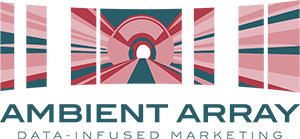You don’t need a six-figure research budget or a Ph.D. in anthropology to understand your customers better—you just need a little creativity, a dash of discipline, and a strong coffee. Don’t get me wrong: I believe in the value of hiring a professional research agency (and I’ll tell you how to find the right one). But if you’re in the early stages of planning, or just want sharper insights before making the leap, here are some highly effective and affordable customer research ideas that actually get the job done.
Let’s roll up our sleeves and get into the good stuff.
1. Ask Your Frontline People What Customers Are Saying
Before you send out a single survey or book a focus group, talk to the folks who speak with your customers every day—sales reps, customer service, tech support, social media managers. These people are walking treasure troves of insight.
Create a simple feedback loop:
- Ask, “What do customers complain about the most?”
- “What do they love so much they actually mention it?”
- “What questions do you get over and over?”
Log the answers in a spreadsheet or use a simple tool like Trello to organize trends. You’ll be amazed at what you already know—but haven’t documented.
2. Do a Competitive Website Review
If you’re not regularly stalking your competitors’ websites, I’m going to assume you’re either incredibly noble or very busy. But it’s worth the time.
Check out:
- Navigation and messaging: What are they emphasizing?
- Content tone: Formal? Casual? Quirky?
- Calls to action: Are they pushing demos, downloads, or consultations?
- Testimonials: What are their customers saying (and what aren’t they saying)?
You don’t need a big budget to identify gaps or opportunities in your own brand voice and content strategy.
3. Use Social Listening (Even Manually)
You don’t need to subscribe to a $5K/month monitoring tool to do basic social listening. Just search your brand, your competitors, and industry keywords on:
- X (or whatever we’re calling it now)
- Industry-specific forums
Look for patterns in complaints, praise, or unexpected use cases. You’ll find questions customers are asking, pain points they’re repeating, and maybe even influencers who organically mention your product category.
If you want to go deeper, use free or low-cost tools like:
- AnswerThePublic
- Google Trends
- Hootsuite’s basic social monitor
4. Talk to Your Customers (Yes, Literally)
Interviews don’t need to be formal. Set up 20-minute Zoom chats with 5–10 customers. Use a simple script. Ask about:
- How they discovered your product or service
- What problem they were trying to solve
- What alternatives they considered
- What surprised them most (good or bad)
Record with permission. Transcribe with AI. Then analyze the heck out of it.
Pro tip: Send them a coffee gift card as a thank-you. People love free caffeine.
5. Survey Smarter, Not Just Harder
Surveys are the go-to method for customer research—but also the most abused. Keep it short. Keep it focused. And don’t forget to actually act on the results.
A few tips:
- Ask only what you’ll actually use.
- Include one open-ended question (“What’s one thing we could do better?”).
- Use a tool like Google Forms, Typeform, or even an embedded HubSpot survey.
- Make sure someone reads every single response.
Bonus: Use AI to analyze open-ended survey questions for themes. Tools like ChatGPT can cluster feedback into categories. But please, have a human double-check the output. Algorithms don’t understand sarcasm or nuance (yet).
6. Test Small, Learn Big
Before hiring a research agency, you can run mini tests that act like research in disguise:
- A/B test landing page headlines to see which value prop resonates.
- Try different messaging in email subject lines.
- Post polls on Instagram Stories or LinkedIn.
These mini experiments generate fast, real-world feedback—and give you great material to discuss with your future research partner.
When It’s Time to Call in the Pros
After you’ve gathered your initial intel, the question becomes: do I go deeper on my own, or bring in a research agency?
Here’s when hiring makes sense:
- You’re launching something big or high-risk
- You need statistically valid data to persuade stakeholders
- You’re just too close to the subject (yes, this happens to all of us)
When you’re ready to make a research agency selection, choose one that doesn’t just deliver data—but helps you translate it into real decisions. Tools like AI can synthesize data fast, but humans are still essential to interpret tone, context, and customer emotion.
That’s where Ambient Array comes in.
Let’s Decode What Your Customers Really Want
At Ambient Array, we combine smart tools with real human curiosity to uncover the motivations, barriers, and breakthroughs that drive your customers. Whether you’re prepping for launch, planning your next campaign, or just want to see your audience more clearly—we’re here for it.
Contact us today to talk about your next project. And if you just want to bounce ideas around, we love that too.


